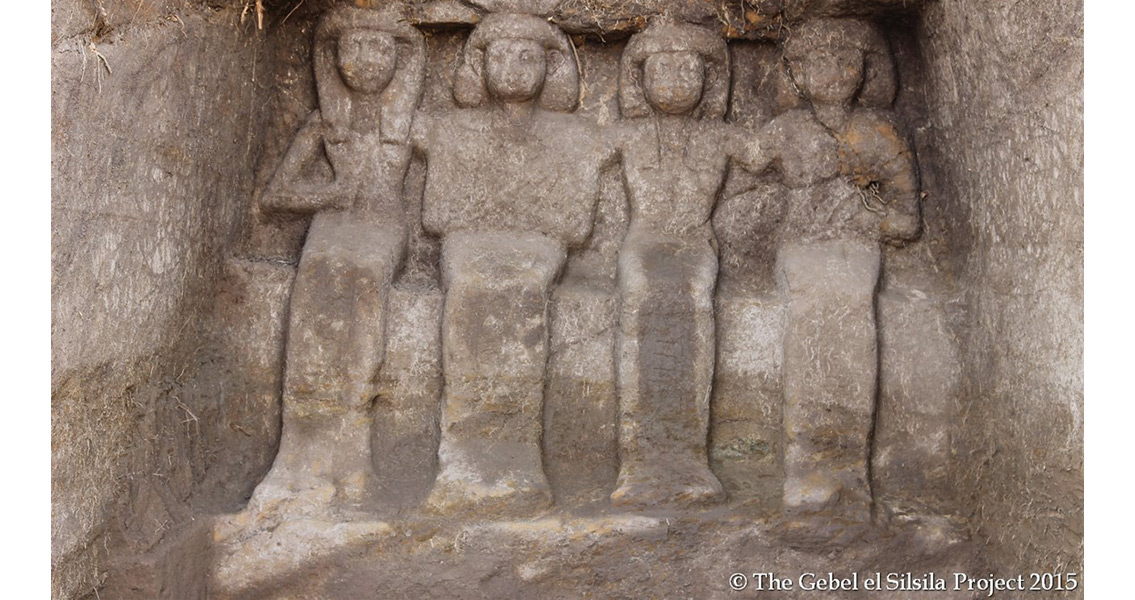<![CDATA[Six carved rock figures have been discovered inside two New Kingdom Egyptian chapels at the site of Gebel el Silsila, located south of Aswan, Egypt. The figures were found inside two niches which had been cut high in the rock by researchers conducting a comprehensive survey of the site. The chapels where the figures were found have been labeled chapel 30 and chapel 31. According to Mahmoud Afifi, the Ancient Egyptian Antiquities Department head, the first niche was discovered near the end of Chapel 30 and contained two figures representing the owner of the chapel and his wife who’s sitting on a chair. The male figure is wearing a wig that’s shoulder-length and is posing in what’s known as the Osirian posture; with his arms crossed across his chest. The woman is resting her left arm on her husband’s shoulder with her right hand on her own chest. The second niche, found in Chapel 31, includes four figures, the first of which depicts the owner of that particular chapel - Neferkhewe. Neferkhewe was the 'Overseer of Foreign Lands' during King Tuthmose III’s reign. His wife, Ruwisti, is depicted in the second figure, while his daughter and son are represented by the third and fourth figures. Gebel el Silsila (which means chain of mountains) was also known as Kheny (which means palace of rowing) in ancient times and extends from Edfu to Kom Ombo, where the River Nile is at its narrowest, bordered on both sides by tall sandstone cliffs which extend right to the edge of the water. The area was also used as a quarry site beginning from around the Eighteenth Dynasty up until the Greco-Roman era. The majority of the talatats (stone blocks cut to a standard size – 27 x 27 x 54 cm) used by the pharaoh Akhenaten to construct buildings located in Amarna and Luxor were quarried there. The entire site of Gebel el Silsila, which covers approximately 20 square kilometers, is currently in the middle of an epigraphic survey project anticipated to last several years. The project is being directed by Maria Nilsson, an archeologist with Lund University. The site was initially covered with sand and block after a destructive ancient earthquake. Erosion has also impacted the site and its monuments. A variety of research teams, including the current Swedish mission, have been working at Gebel al Silsila since 2012. Chapel 31, with all of its architectural elements still intact, is the best preserved of the 32 chapels originally located there Ancient Egyptians carved small shrines into the rock faces of the cliffs at Gebel Al-Silsila, dedicating them to numerous Nile deities as well as to the river itself. Even smaller shrines were cut during the reigns of King Thutmose I, Thutmose III and Hatshepsut. Horemhab, the last pharaoh of Egypt’s Eighteenth Dynasty, had a rock-hewn temple constructed where various kings of the Nineteenth Dynasty later, in some way, left behind their mark. Gebel Al-Silsila then became an important cultural center where sacrifices and offerings were made to gods associated with the River Nile, thus ensuring the wellbeing of the country in the coming year. Image courtesy of The Gebel el Silsila Project 2015 ]]>
Ancient Rock Figures Found at Gebel el Silsila in Egypt
